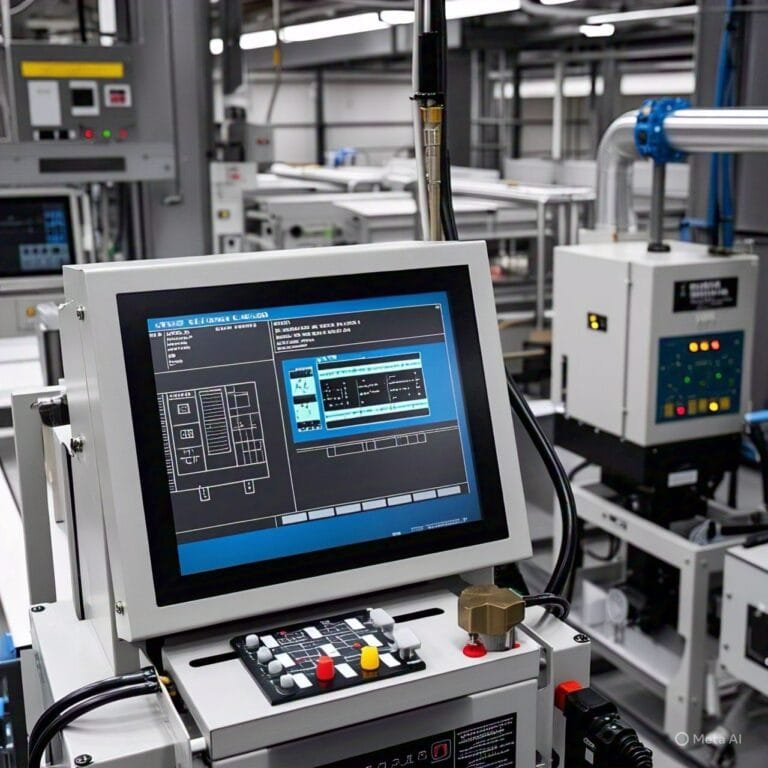Common Challenges with Output Modules and How to Solve Them
Output modules play a crucial role in industrial automation systems, ensuring signals from the PLC are properly sent to actuators, relays, and various field devices. Like any electronic component, they can face technical issues, especially under continuous industrial use. In this article, we’ll explore the common challenges associated with output modules such as BMXRMS128MPF and bmxdra1605h, along with practical solutions to address them.
Understanding Output Modules in Automation
What Output Modules Do
Output modules are a key component in PLC-based systems. They are responsible for delivering control signals to external devices like motors, lights, valves, and solenoids. Depending on the system, these modules can be digital, analog, or relay-based.
Types of Output Modules
-
Digital Output Modules: These send discrete ON/OFF signals.
-
Analog Output Modules: These transmit variable signals (e.g., 4-20 mA or 0-10 V).
-
Relay Output Modules: These switch mechanical relays for high-voltage applications.
Common Challenges with Output Modules
1. Overloading of Output Channels
The Issue
One of the most frequent problems is overloading output channels, especially when connecting devices with higher power requirements.
The Solution
Always refer to the module’s technical datasheet. For instance, the bmxdra1605h supports a limited current per channel and total module load. Exceeding these ratings leads to overheating or permanent damage. Use external relays or contactors for high-current loads.
2. Wiring and Connection Errors
The Issue
Loose terminals, reversed polarity, or poor-quality wiring can result in intermittent signals or complete output failure.
The Solution
Verify connections during installation. In the BMXRMS128MPF, which is a relay output module, make sure each channel is securely wired, and proper labeling is maintained. Use shielded cables where appropriate to reduce interference.
3. Module Configuration Mistakes
The Issue
Incorrect settings in the PLC software may prevent the output module from functioning correctly.
The Solution
Use the proper configuration tool or software (like Unity Pro or EcoStruxure Control Expert for Schneider modules). Double-check the hardware configuration, especially if you’re working with multiple modules like bmxdra1605h in a rack.
4. Signal Interference
The Issue
Electromagnetic interference (EMI) from nearby equipment can disrupt output signals, especially in analog modules.
The Solution
Grounding and shielding are critical. Keep output signal lines away from power cables. For analog or sensitive relay modules like BMXRMS128MPF, maintain separation between high-voltage and signal wiring.
5. Environmental Conditions
The Issue
Modules are often installed in environments with high temperatures, humidity, or vibration, leading to performance degradation or failure.
The Solution
Ensure proper ventilation in control panels. Modules like the bmxdra1605h are rated for specific temperature and humidity ranges—operate within these specifications. Use vibration-dampening mounts if installed near heavy machinery.
6. Firmware or Compatibility Issues
The Issue
Sometimes, a module doesn’t respond as expected due to outdated firmware or PLC CPU compatibility problems.
The Solution
Check firmware compatibility before installing new modules. Update the PLC firmware to support the latest output modules, including BMXRMS128MPF and bmxdra1605h.
7. Failing Relays or Components
The Issue
In relay-based output modules like BMXRMS128MPF, the mechanical relay can wear out after repeated switching cycles.
The Solution
Monitor relay health through diagnostic tools if available. For mission-critical operations, consider periodic replacement or switching to solid-state output modules for longer life.
Preventive Maintenance Tips
Regular Inspection
Perform scheduled inspections of all output modules. Look for signs of overheating, discoloration, or audible relay chatter.
Testing Procedures
Use multimeters and PLC diagnostic functions to check voltage levels and module status.
Spare Module Strategy
Keep spare modules such as bmxdra1605h on hand to minimize downtime during failures or maintenance.
Conclusion
Output modules like BMXRMS128MPF and bmxdra1605h are vital to industrial automation, but they require careful handling, correct configuration, and routine maintenance to function reliably. By understanding the common challenges and applying the appropriate solutions, you can significantly reduce system downtime and extend the lifespan of your control hardware.
FAQs
Q1: What is the main function of the BMXRMS128MPF output module?
A: It’s a relay output module used to control external devices through isolated switching, suitable for moderate-load applications.
Q2: Can I connect high-power devices directly to the bmxdra1605h module?
A: No, it’s recommended to use external relays or contactors for high-power loads to avoid damaging the module.
Q3: What causes intermittent output signal failures?
A: Common causes include loose wiring, poor connections, or electromagnetic interference near the output wiring.
Q4: How do I know if an output module relay is failing?
A: Signs include clicking noises, erratic output behavior, or failure to switch loads as expected.
Q5: Are BMXRMS128MPF and bmxdra1605h modules hot-swappable?
A: No, always power down the system before removing or replacing these modules to avoid damage and ensure safety.


